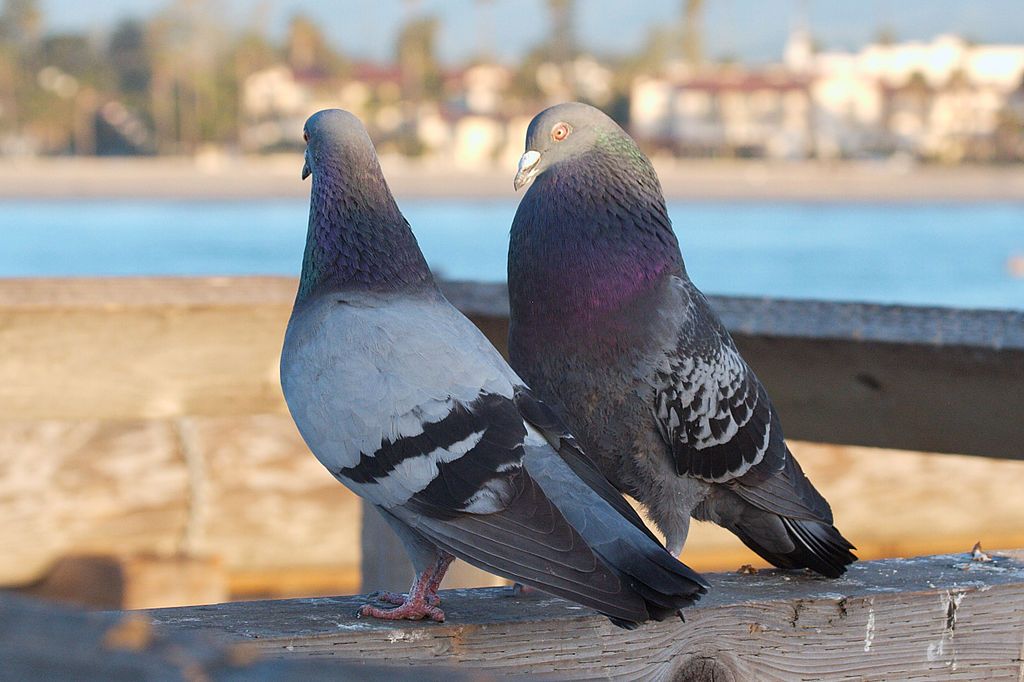
28 March 2024
Peregrines hang out where their food is plentiful so they’re often in places with lots of pigeons. Watching peregrines, as I often do, means waiting (bored) for them to choose the perfect moment to catch a bird. Inevitably I watch pigeons while I wait for peregrines so I’ve seen a lot of pigeon courtship.
Most birds have a breeding season for a few months per year in spring and summer but rock pigeons, like humans, breed over and over all year long if there’s enough food to sustain their families. You can tell when they’re starting a new family because they court conspicuously.
Birds of the World’s rock pigeon account, quoted in the list below, explains the steps of courtship that escalate to the moment of copulation.
- [Courtship] Begins with bowing and cooing, in which male stands tall, inflates crop, fans tail, struts in circle, bows head and neck while giving display coo. This is repeated many times while circling and moving around the female.
- Hetero-preening (“nibbling”) follows, male first, female later.
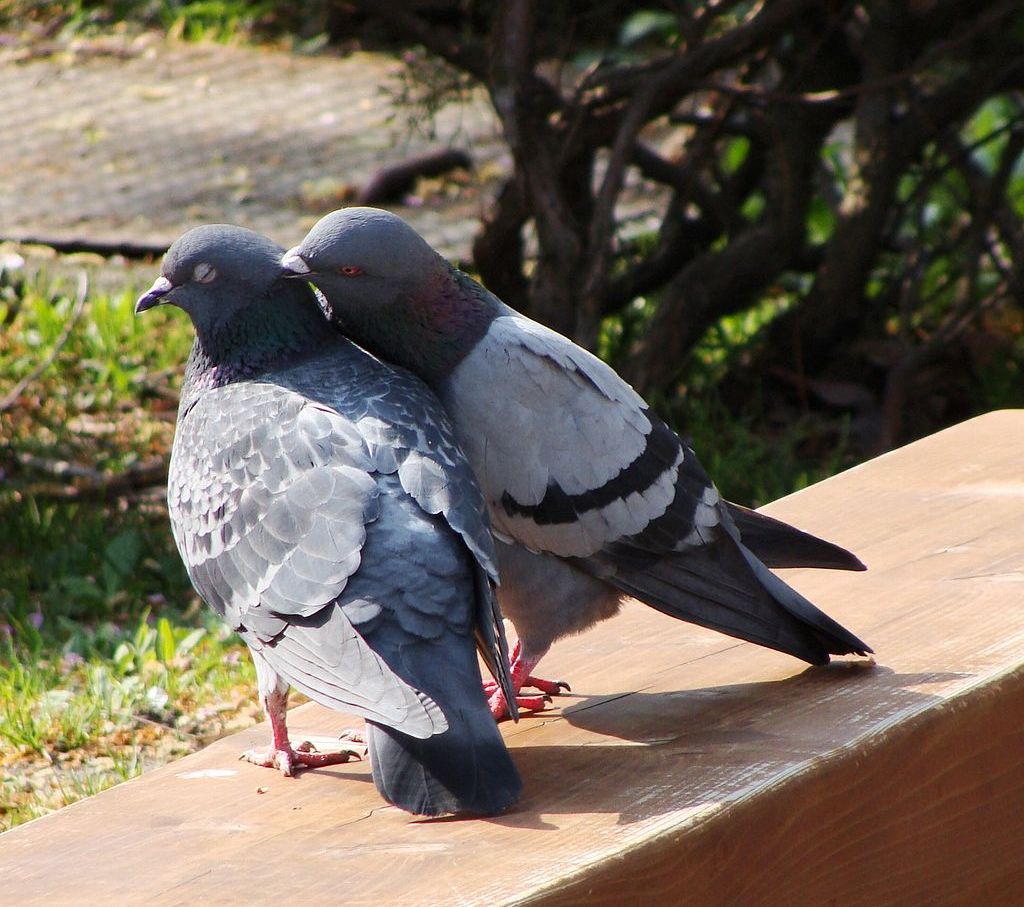
- [Billing:] Female ultimately solicits feeding, male appears to regurgitate seed or liquid. Female may repeat …
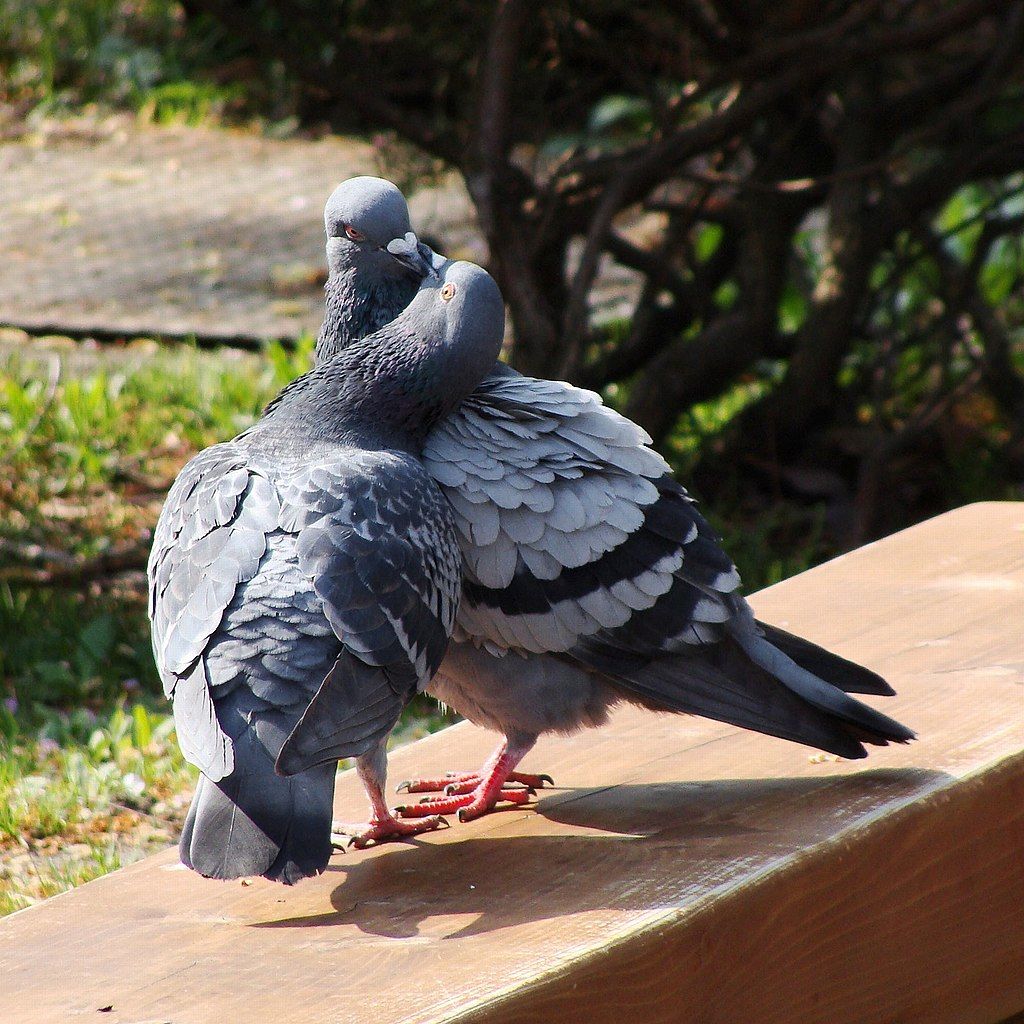
- … followed by a crouch with wings half raised. Male then mounts, balances with flapping wings while vents are opposed 1–2 seconds for sperm transfer.
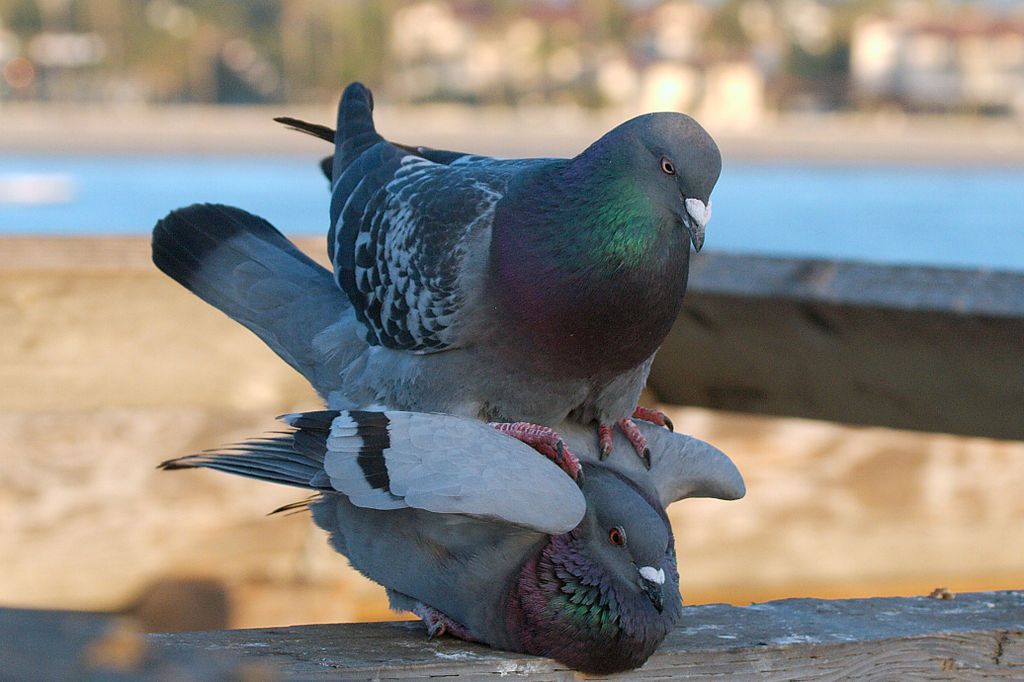
After mating the male may do a post copulatory display. Sometimes they fly together.
- Post-copulatory display includes a few steps while standing tall, and often a display flight, usually by the male, in which wings are clapped together on an exaggerated upstroke for 3–5 wingbeats. Bird flies out to another perch, 40–80 m distant, clapping wings at least once and gliding with wings in a “V” between bouts of clapping
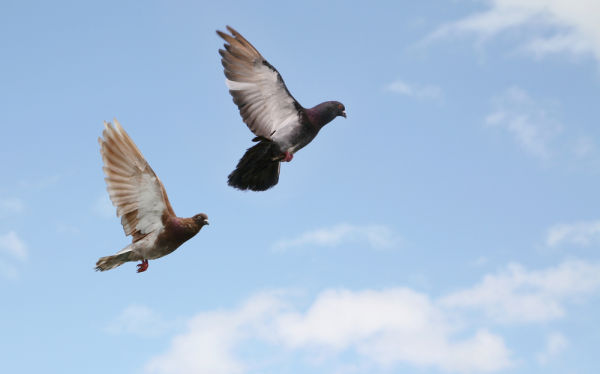
While you’re observing pigeon courtship there’s one more thing to notice. The male and female do not have the same plumage patterns because they choose mates that don’t look like themselves.